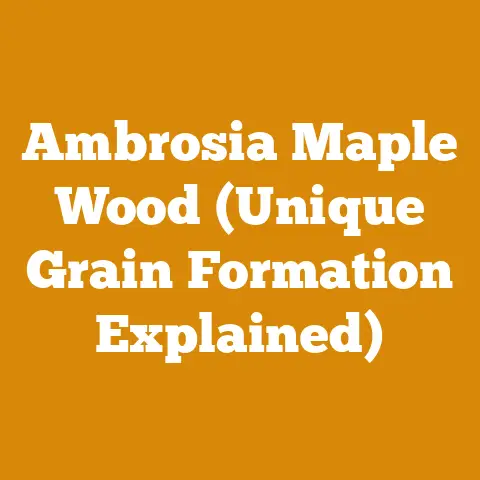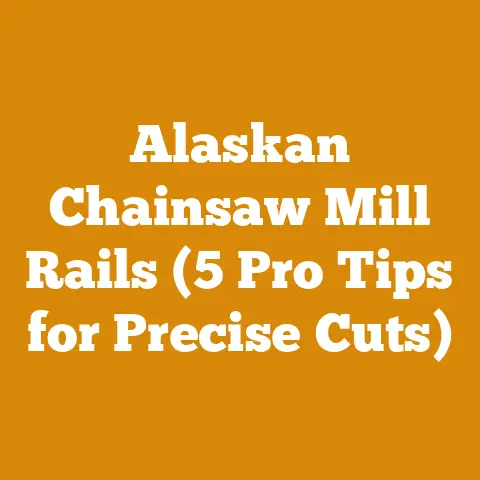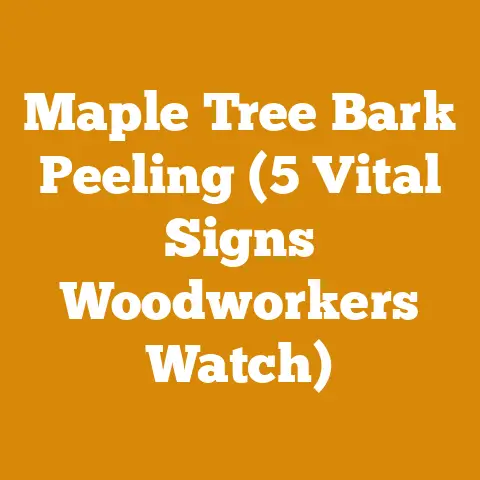Using Stump Grinder Rental Tips (Maximize Efficiency & Safety)
The rough, splintered bark digging into my gloved hands, the gritty sawdust clinging to my skin – that’s the texture of stump grinding I know well. It’s a task that demands respect, both for the power of the machine and the potential hazards involved. Over the years, I’ve learned that renting a stump grinder isn’t just about grabbing the keys and firing it up. It’s about understanding the machine, planning your attack, and prioritizing safety above all else. I’ve had my share of close calls and hard-won victories against stubborn stumps. Now, I’m going to share what I’ve learned so you can maximize efficiency and safety when you tackle your own stump grinding project.
Using Stump Grinder Rental Tips (Maximize Efficiency & Safety)
Understanding Your Stump Grinder Rental
Before you even think about firing up that engine, you need to understand the beast you’re about to unleash. Not all stump grinders are created equal. I’ve seen everything from compact, walk-behind models to massive, tow-behind machines capable of obliterating even the most formidable stumps. Choosing the right one can save you time, money, and a whole lot of backache.
Types of Stump Grinders Available for Rent
- Walk-Behind Stump Grinders: These are the most common type you’ll find at rental centers. They’re relatively easy to maneuver and are suitable for small to medium-sized stumps in accessible areas. Think of them as the workhorses of the stump grinding world. I’ve used these extensively for residential projects, and they’re surprisingly effective.
- Tow-Behind Stump Grinders: These are larger and more powerful, requiring a vehicle with a tow hitch. They’re ideal for larger stumps or when you have a lot of stumps to grind. They can be a bit trickier to maneuver, especially in tight spaces, but their increased power makes quick work of tough jobs.
- Self-Propelled Stump Grinders: These offer the best of both worlds: maneuverability and power. They’re usually more expensive to rent, but they can be worth it if you have a large or complex project. I’ve used these on commercial sites with numerous large stumps and found them to be a significant time-saver.
- Handheld Stump Grinders: These are small, lightweight grinders designed for very small stumps and roots. They’re not suitable for anything substantial, but they can be useful for cleaning up small remnants after using a larger grinder.
Key Features to Consider When Renting
- Engine Size (Horsepower): This is a primary indicator of the grinder’s power. A larger engine will generally be able to grind larger stumps more quickly. I recommend at least 13 horsepower for most residential projects.
- Cutting Depth: This determines how far below the ground you can grind the stump. A deeper cutting depth is essential if you plan to replant in the same area. Aim for at least 6-12 inches below ground level.
- Cutting Wheel Diameter: A larger wheel will be able to grind a wider path with each sweep, reducing the number of passes you need to make.
- Tooth Type and Condition: The teeth are the cutting edge of the grinder. Make sure they’re sharp and in good condition. Dull or damaged teeth will significantly reduce the grinder’s efficiency and can even damage the machine. Carbide-tipped teeth are more durable and will last longer than steel teeth.
- Maneuverability: Consider the size and weight of the grinder, as well as the terrain where you’ll be using it. A self-propelled or tow-behind model may be necessary if you have a lot of stumps or difficult terrain.
My Personal Experience: I once rented a walk-behind grinder with dull teeth. What should have been a two-hour job turned into a full-day ordeal. I learned my lesson: always inspect the teeth before renting and ask the rental center to sharpen them if necessary.
Pre-Rental Inspection Checklist
Before you sign the rental agreement, take the time to thoroughly inspect the stump grinder. This could save you from unexpected breakdowns and potential liability.
- Check the Engine: Ensure the engine starts easily and runs smoothly. Listen for any unusual noises or vibrations.
- Inspect the Cutting Wheel and Teeth: Look for any signs of damage or wear. Make sure the teeth are securely attached and properly sharpened.
- Check the Hydraulic System: If the grinder has a hydraulic system, check for leaks and ensure the hoses are in good condition.
- Test the Controls: Make sure all the controls (throttle, brake, cutting wheel engagement) are working properly.
- Review the Safety Features: Ensure all safety guards and shields are in place and functioning correctly.
- Ask Questions: Don’t hesitate to ask the rental center staff any questions you have about the grinder’s operation or maintenance.
Key Takeaway: A thorough pre-rental inspection is crucial for ensuring a safe and efficient stump grinding experience. Don’t rush this step.
Planning Your Stump Grinding Project
Proper planning is essential for a successful stump grinding project. It’s not just about showing up with the machine; it’s about assessing the situation, preparing the site, and understanding the potential challenges. I’ve found that taking the time to plan upfront saves a lot of headaches down the road.
Assessing the Stump and Surrounding Area
- Stump Size and Type: Measure the diameter of the stump at its widest point. This will help you determine the size of the grinder you need. Also, identify the type of tree the stump came from. Hardwoods like oak and maple will be more difficult to grind than softwoods like pine and fir.
- Root System: Examine the surrounding area for any visible roots. These can be a tripping hazard and can also damage the grinder if you’re not careful.
- Obstacles: Identify any obstacles in the area, such as fences, buildings, underground utilities, or rocks. Mark these clearly to avoid damaging them.
- Soil Type: The type of soil can affect the grinding process. Sandy soil is generally easier to grind than clay soil. Rocky soil can damage the grinder’s teeth.
- Accessibility: Consider how you’ll get the grinder to the stump. Make sure there’s enough room to maneuver the machine and that the path is clear of obstacles.
My Personal Story: I once started grinding a stump without realizing it was surrounded by buried rocks. I ended up damaging several teeth on the grinder and had to pay for repairs. Now, I always thoroughly inspect the area before I start grinding.
Preparing the Site for Stump Grinding
- Clear the Area: Remove any rocks, debris, or vegetation from around the stump. This will prevent them from being thrown by the grinder and causing injury or damage.
- Mark Underground Utilities: Before you start digging or grinding, call your local utility companies to mark the location of any underground utilities. Striking a gas line or electrical cable can be extremely dangerous.
- Protect Surrounding Objects: Cover any nearby buildings, fences, or vehicles with tarps or plywood to protect them from flying debris.
- Water the Stump: Wetting the stump before grinding can help to reduce dust and make the grinding process easier.
- Inform Neighbors: Let your neighbors know when you’ll be grinding the stump. The noise can be disruptive, so it’s courteous to give them a heads-up.
Necessary Safety Gear and Clothing
Safety is paramount when operating a stump grinder. Always wear the appropriate safety gear to protect yourself from injury. I never start a stump grinding project without the following:
- Eye Protection: Wear safety glasses or a face shield to protect your eyes from flying debris.
- Hearing Protection: Stump grinders are extremely loud. Wear earplugs or earmuffs to protect your hearing.
- Hand Protection: Wear heavy-duty work gloves to protect your hands from cuts and abrasions.
- Leg Protection: Wear long pants to protect your legs from flying debris. Chaps designed for chainsaw use offer even better protection.
- Foot Protection: Wear sturdy work boots with steel toes to protect your feet from injury.
- Dust Mask: Wear a dust mask or respirator to protect your lungs from dust and debris.
Remember: No job is worth risking your safety. Always wear the appropriate safety gear.
Key Takeaway: Thorough planning and preparation are essential for a safe and efficient stump grinding project. Don’t skip these steps.
Operating the Stump Grinder Safely and Efficiently
Now that you’ve prepared the site and gathered your safety gear, it’s time to start grinding. But before you fire up the engine, take a moment to review the operating instructions and safety precautions. I’ve seen too many accidents happen because people were in a hurry or didn’t understand how to operate the machine properly.
Starting and Positioning the Stump Grinder
- Read the Manual: Familiarize yourself with the specific operating instructions for your stump grinder model.
- Start the Engine: Follow the manufacturer’s instructions for starting the engine.
- Position the Grinder: Position the grinder so that the cutting wheel is directly in front of the stump. Make sure the grinder is stable and on a level surface.
- Engage the Cutting Wheel: Slowly engage the cutting wheel and begin grinding.
Grinding Techniques for Different Stump Sizes
- Small Stumps (Less than 12 inches in diameter): For small stumps, you can usually grind the entire stump in one or two passes. Start by grinding around the perimeter of the stump and then work your way towards the center.
- Medium Stumps (12-24 inches in diameter): For medium stumps, you’ll need to make multiple passes. Start by grinding around the perimeter of the stump and then work your way towards the center, overlapping each pass slightly.
- Large Stumps (Over 24 inches in diameter): For large stumps, you’ll need to use a systematic approach. Start by grinding a trench around the perimeter of the stump, then work your way inwards, grinding the stump in sections.
My Tip: When grinding large stumps, I find it helpful to visualize the stump as a pie and grind each slice individually.
Controlling Dust and Debris
- Water: Use water to keep the dust down. You can use a garden hose or a sprayer.
- Tarp: Use a tarp to contain the debris. This will also protect surrounding objects from damage.
- Wind: Be aware of the wind direction. Position yourself so that the wind is blowing the dust and debris away from you.
Dealing with Obstacles and Difficult Situations
- Rocks: If you encounter rocks, stop grinding immediately and remove the rocks. Continuing to grind with rocks present can damage the grinder’s teeth.
- Roots: Grind any visible roots before grinding the stump. This will prevent them from getting tangled in the grinder.
- Uneven Terrain: If the terrain is uneven, take extra care to keep the grinder stable. Use shims or blocks to level the grinder if necessary.
- Stuck Grinder: If the grinder gets stuck, stop the engine and carefully remove any debris that is obstructing the cutting wheel.
Important: Never attempt to repair a stump grinder while the engine is running.
Shutting Down and Securing the Stump Grinder
- Disengage the Cutting Wheel: Disengage the cutting wheel and allow it to come to a complete stop.
- Shut Off the Engine: Turn off the engine and remove the key.
- Clean the Grinder: Clean any debris from the grinder.
- Secure the Grinder: Secure the grinder to prevent it from rolling or being stolen.
Key Takeaway: Operating a stump grinder safely and efficiently requires careful attention to detail and a thorough understanding of the machine.
Troubleshooting Common Stump Grinder Problems
Even with careful planning and operation, you may encounter problems while grinding stumps. Knowing how to troubleshoot common issues can save you time and frustration. I’ve learned a few tricks over the years that have helped me get back on track quickly.
Engine Won’t Start
- Check the Fuel: Make sure there is enough fuel in the tank.
- Check the Spark Plug: Make sure the spark plug is clean and properly connected.
- Check the Air Filter: Make sure the air filter is clean.
- Check the Battery: If the grinder has an electric start, make sure the battery is charged.
Cutting Wheel Won’t Engage
- Check the Engagement Lever: Make sure the engagement lever is fully engaged.
- Check the Belt: Make sure the belt is in good condition and properly tensioned.
- Check the Hydraulic System: If the grinder has a hydraulic system, check for leaks and ensure the hoses are in good condition.
Grinder Vibrates Excessively
- Check the Cutting Wheel: Make sure the cutting wheel is properly balanced.
- Check the Teeth: Make sure the teeth are securely attached and in good condition.
- Check the Engine Mounts: Make sure the engine mounts are secure.
Grinder Overheats
- Check the Coolant Level: Make sure the coolant level is adequate.
- Check the Radiator: Make sure the radiator is clean and free of debris.
- Check the Airflow: Make sure there is adequate airflow around the engine.
My Personal Experience: I once spent hours trying to figure out why a stump grinder wouldn’t start, only to discover that the fuel shut-off valve was closed. It’s always the simple things that get you!
Grinding is Slow or Ineffective
- Check the Teeth: Make sure the teeth are sharp and in good condition.
- Check the Belt: Make sure the belt is in good condition and properly tensioned.
- Adjust the Grinding Speed: Try adjusting the grinding speed.
- Apply More Pressure: Try applying more pressure to the stump.
Important: If you’re unable to troubleshoot the problem yourself, contact the rental center for assistance.
Key Takeaway: Knowing how to troubleshoot common stump grinder problems can save you time and frustration. Don’t be afraid to ask for help if you need it.
Stump Grinder Maintenance and Care
Proper maintenance and care are essential for keeping your stump grinder running smoothly and preventing costly repairs. I’ve learned that a little preventative maintenance goes a long way.
Daily Maintenance Tasks
- Check the Oil Level: Check the oil level before each use.
- Check the Fuel Level: Check the fuel level before each use.
- Check the Coolant Level: Check the coolant level before each use.
- Inspect the Teeth: Inspect the teeth for damage or wear.
- Clean the Grinder: Clean any debris from the grinder.
Periodic Maintenance Tasks
- Sharpen the Teeth: Sharpen the teeth regularly to maintain optimal grinding performance.
- Change the Oil: Change the oil according to the manufacturer’s recommendations.
- Replace the Air Filter: Replace the air filter according to the manufacturer’s recommendations.
- Inspect the Belts: Inspect the belts for wear and tear and replace them as needed.
- Grease the Bearings: Grease the bearings according to the manufacturer’s recommendations.
Storing the Stump Grinder Properly
- Clean the Grinder: Clean the grinder thoroughly before storing it.
- Drain the Fuel: Drain the fuel tank if you’re storing the grinder for an extended period.
- Store in a Dry Place: Store the grinder in a dry place to prevent rust and corrosion.
- Cover the Grinder: Cover the grinder to protect it from dust and debris.
Remember: Regular maintenance will extend the life of your stump grinder and prevent costly repairs.
Key Takeaway: Proper maintenance and care are essential for keeping your stump grinder running smoothly and preventing costly repairs.
After Stump Grinding: Cleanup and Restoration
Once you’ve finished grinding the stump, the job isn’t quite done. You still need to clean up the area and restore it to its original condition. I’ve found that taking the time to do this properly leaves a positive impression and prevents future problems.
Removing Grindings and Debris
- Shovel: Use a shovel to remove the grindings and debris from the area.
- Wheelbarrow: Use a wheelbarrow to transport the grindings and debris to a disposal site.
- Tarp: Use a tarp to collect any remaining grindings and debris.
Filling the Hole
- Topsoil: Fill the hole with topsoil.
- Compost: Add compost to improve the soil quality.
- Seed or Sod: Seed or sod the area to restore the grass.
Replanting Options
- Planting a New Tree: You can plant a new tree in the same area, but make sure to choose a species that is compatible with the soil and climate.
- Planting Shrubs or Flowers: You can plant shrubs or flowers in the area to add color and beauty.
- Creating a Garden: You can create a garden in the area to grow vegetables or herbs.
My Personal Touch: After grinding a stump, I often like to add a layer of mulch to the area to help retain moisture and suppress weeds.
Preventing Future Stump Growth
- Herbicide: Apply a stump-killing herbicide to prevent the stump from sprouting new growth.
- Salt: Pour salt into the stump to kill the roots.
- Physical Removal: Dig up the remaining roots to prevent them from sprouting.
Important: Always follow the manufacturer’s instructions when using herbicides or other chemicals.
Key Takeaway: Cleaning up and restoring the area after stump grinding is an important part of the job. Take the time to do it properly.
Safety Considerations Beyond the Machine
While the stump grinder itself presents obvious safety hazards, it’s important to consider the broader environment and potential risks associated with the work. I’ve learned that being aware of these factors can prevent accidents and injuries.
Working Around Underground Utilities
- Call Before You Dig: Always call your local utility companies to mark the location of underground utilities before you start digging or grinding.
- Respect the Markings: Respect the markings and avoid digging or grinding within the designated safety zone.
- Hand Digging: If you need to dig near underground utilities, use hand tools to avoid damaging them.
Preventing Flying Debris Injuries
- Clear the Area: Remove any rocks, debris, or vegetation from around the stump.
- Use a Tarp: Use a tarp to contain the debris.
- Maintain a Safe Distance: Keep bystanders at a safe distance from the grinder.
Protecting Yourself from Noise and Dust
- Wear Hearing Protection: Wear earplugs or earmuffs to protect your hearing.
- Wear a Dust Mask: Wear a dust mask or respirator to protect your lungs from dust and debris.
- Work in a Well-Ventilated Area: Work in a well-ventilated area to reduce your exposure to dust and fumes.
Avoiding Slips, Trips, and Falls
- Wear Sturdy Footwear: Wear sturdy work boots with steel toes to protect your feet from injury.
- Keep the Area Clear: Keep the area clear of obstacles and debris.
- Be Aware of Uneven Terrain: Be aware of uneven terrain and take extra care when walking or working on slopes.
My Safety Philosophy: I always tell myself, “Slow down, think it through, and be careful.” It’s a simple reminder that helps me stay focused and avoid accidents.
Key Takeaway: Safety is not just about the machine; it’s about the entire work environment. Be aware of potential hazards and take steps to prevent accidents.
Renting vs. Hiring a Professional
Deciding whether to rent a stump grinder and do the job yourself or hire a professional is a common dilemma. Both options have their pros and cons, and the best choice depends on your individual circumstances. I’ve done both, and I can offer some insights based on my experiences.
Factors to Consider
- Stump Size and Quantity: If you have a few small stumps, renting a grinder may be the most cost-effective option. However, if you have a large number of large stumps, hiring a professional may be a better choice.
- Your Skill Level: If you’re comfortable operating machinery and have some experience with landscaping or tree work, you may be able to handle the job yourself. However, if you’re not comfortable operating machinery or don’t have any experience, hiring a professional is probably the best option.
- Time Commitment: Grinding stumps can be time-consuming, especially if you’re not experienced. If you’re short on time, hiring a professional may be the best option.
- Budget: Renting a stump grinder can be cheaper than hiring a professional, but you’ll need to factor in the cost of the rental, fuel, and any necessary safety gear.
- Safety Concerns: Stump grinding can be dangerous. If you’re not comfortable operating machinery or working around trees, hiring a professional is the safest option.
Pros and Cons of Renting
Pros:
- Cost-Effective: Renting can be cheaper than hiring a professional, especially for small jobs.
- Control: You have complete control over the project.
- Flexibility: You can work at your own pace and on your own schedule.
Cons:
- Time-Consuming: Grinding stumps can be time-consuming.
- Physically Demanding: Stump grinding can be physically demanding.
- Safety Risks: Stump grinding can be dangerous if you’re not careful.
- Maintenance: You’re responsible for maintaining the grinder.
Pros and Cons of Hiring a Professional
Pros:
- Expertise: Professionals have the experience and expertise to handle the job safely and efficiently.
- Time Savings: Hiring a professional can save you time and effort.
- Reduced Risk: Professionals are insured and bonded, which protects you from liability.
- Equipment: Professionals have the right equipment for the job.
Cons:
- Cost: Hiring a professional can be more expensive than renting.
- Scheduling: You may need to schedule the work in advance.
- Less Control: You have less control over the project.
My Recommendation: If you’re unsure whether to rent or hire, get quotes from both rental centers and professional stump grinding services. Compare the costs and benefits and make the decision that’s right for you.
Key Takeaway: Deciding whether to rent or hire depends on your individual circumstances. Consider the factors listed above and make the decision that’s right for you.
Advanced Techniques and Considerations
For those who plan to tackle stump grinding regularly or have particularly challenging projects, there are some advanced techniques and considerations that can improve efficiency and results. I’ve picked up these tips over years of experience and they’ve made a significant difference in my work.
Grinding Below Grade for Replanting
- Determine the Desired Depth: Decide how far below the surface you need to grind the stump to allow for replanting. Typically, 6-12 inches is sufficient.
- Grind in Layers: Grind the stump in layers, gradually lowering the cutting wheel to the desired depth.
- Remove Debris: Remove the grindings and debris as you go to prevent them from interfering with the grinding process.
- Compact the Soil: Once you’ve reached the desired depth, compact the soil to create a stable base for replanting.
Grinding Near Structures or Utilities
- Hand Digging: Use hand tools to carefully expose the stump and roots near structures or utilities.
- Protective Barriers: Use plywood or other protective barriers to shield structures from flying debris.
- Slow and Steady: Grind slowly and steadily to minimize the risk of damage.
- Spotter: Have a spotter watch for any signs of damage to structures or utilities.
Dealing with Large Root Systems
- Expose the Roots: Use a shovel or other tools to expose the roots.
- Cut the Roots: Cut the roots with a chainsaw or other cutting tool.
- Grind the Roots: Grind the roots with the stump grinder.
- Remove the Root Ball: Remove the root ball to prevent future growth.
Using Stump Grinding Chemicals
- Identify the Tree Species: Identify the tree species to determine the appropriate herbicide.
- Follow Instructions: Follow the manufacturer’s instructions carefully.
- Apply the Herbicide: Apply the herbicide to the freshly cut stump.
- Monitor the Stump: Monitor the stump for signs of regrowth.
My Advanced Tip: For particularly stubborn stumps, I sometimes use a combination of grinding and chemical treatment. I’ll grind the stump as much as possible, then apply a stump-killing herbicide to the remaining wood. This often provides the best long-term results.
Key Takeaway: Advanced stump grinding techniques require careful planning and execution. Use these tips to improve efficiency and results.
The Future of Stump Grinding Technology
The world of stump grinding is constantly evolving, with new technologies and innovations emerging all the time. Keeping up with these advancements can help you stay ahead of the curve and improve your efficiency and safety. I’m always looking for new ways to make the job easier and more effective.
Electric Stump Grinders
- Quiet Operation: Electric stump grinders are much quieter than gas-powered models.
- Zero Emissions: Electric stump grinders produce zero emissions.
- Less Maintenance: Electric stump grinders require less maintenance than gas-powered models.
Robotic Stump Grinders
- Remote Control: Robotic stump grinders can be operated remotely.
- Increased Safety: Robotic stump grinders can reduce the risk of injury.
- Access to Difficult Areas: Robotic stump grinders can access difficult areas.
Improved Cutting Wheel Designs
- More Efficient Grinding: New cutting wheel designs are more efficient at grinding stumps.
- Longer Tooth Life: New tooth designs last longer and require less frequent sharpening.
- Reduced Vibration: New cutting wheel designs reduce vibration.
GPS and Mapping Technology
- Accurate Stump Location: GPS and mapping technology can be used to accurately locate stumps.
- Efficient Route Planning: GPS and mapping technology can be used to plan efficient routes for stump grinding.
- Data Collection: GPS and mapping technology can be used to collect data on stump size, location, and other factors.
My Prediction: I believe that electric and robotic stump grinders will become increasingly common in the future. These technologies offer significant advantages in terms of noise, emissions, safety, and efficiency.
Key Takeaway: The future of stump grinding is bright, with new technologies and innovations emerging all the time. Stay informed and embrace these advancements to improve your efficiency and safety.
By understanding the different types of stump grinders, planning your project carefully, operating the machine safely, troubleshooting common problems, and maintaining the equipment properly, you can maximize efficiency and safety when renting a stump grinder. Remember to always prioritize safety and take your time. With a little preparation and attention to detail, you can conquer even the most stubborn stumps. Now, get out there and grind!






